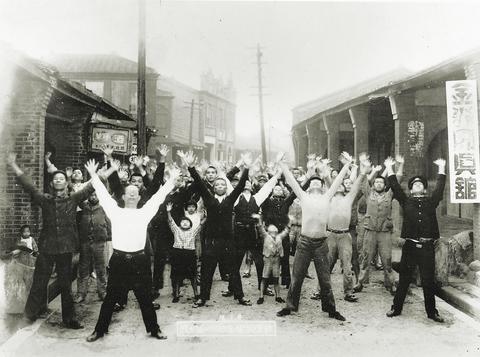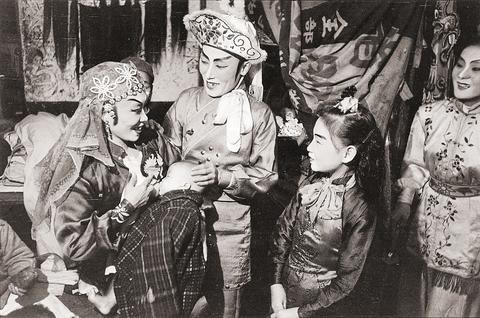For a brief, yet interesting photographic look at Taiwan of yesteryear, the National Museum of History (
Entitled A Retrospective of One Hundred Years' of Taiwan Photography (
Focusing predominantly on people rather than places, the works paint an interesting picture of not only the development of photography in Taiwan but also of its peoples. The exhibition begins with some of the earliest photographs taken in Taiwan by foreign photographers.

PHOTO COURTESY OF NATIONAL MUSEUM OF HISTORY
Many of these early works, such as those taken by Japanese national Torii Ryuzo (
Ryuzo took some stunning shots of Atayal and Ami men, women and children, at a time when very few foreigners had ever seen such peoples, often dressed in their battle gear. His subjects are generally posing, fully aware a camera is being pointed at them.
Examples of works by Taiwan's "first" photographer, Lin Tsao (

Other works of note include those by Wu Jin-miao (
Some shots of the time are less funny, however. Deng Nan-guang (
The shot, taken in 1940, shows a group of soldiers walking passed a crowd of civilians, all of whom are bowing in respect, or possibly dread.
Sadly, like many other exhibitions at the museum, English language material is minimal and the show gives viewers an all to brief glimpse of the works of the nation's pioneering photographers.
For those who wish to learn more, and who posses moderate Chinese language capabilities, then in addition to the exhibition, a special two-day seminar featuring panel discussions and lectures apropos the history and development of photography in Taiwan will take place on Saturday, Nov. 8 and Sunday, Nov. 9.
For further information about the seminar, call (02) 2370 6031 or email janet@moe.nmh.gov.tw.

Exceptions to the rule are sometimes revealing. For a brief few years, there was an emerging ideological split between the Democratic Progressive Party (DPP) and Chinese Nationalist Party (KMT) that appeared to be pushing the DPP in a direction that would be considered more liberal, and the KMT more conservative. In the previous column, “The KMT-DPP’s bureaucrat-led developmental state” (Dec. 11, page 12), we examined how Taiwan’s democratic system developed, and how both the two main parties largely accepted a similar consensus on how Taiwan should be run domestically and did not split along the left-right lines more familiar in

As I finally slid into the warm embrace of the hot, clifftop pool, it was a serene moment of reflection. The sound of the river reflected off the cave walls, the white of our camping lights reflected off the dark, shimmering surface of the water, and I reflected on how fortunate I was to be here. After all, the beautiful walk through narrow canyons that had brought us here had been inaccessible for five years — and will be again soon. The day had started at the Huisun Forest Area (惠蓀林場), at the end of Nantou County Route 80, north and east

This month the government ordered a one-year block of Xiaohongshu (小紅書) or Rednote, a Chinese social media platform with more than 3 million users in Taiwan. The government pointed to widespread fraud activity on the platform, along with cybersecurity failures. Officials said that they had reached out to the company and asked it to change. However, they received no response. The pro-China parties, the Chinese Nationalist Party (KMT) and Taiwan People’s Party (TPP), immediately swung into action, denouncing the ban as an attack on free speech. This “free speech” claim was then echoed by the People’s Republic of China (PRC),

Specialty sandwiches loaded with the contents of an entire charcuterie board, overflowing with sauces, creams and all manner of creative add-ons, is perhaps one of the biggest global food trends of this year. From London to New York, lines form down the block for mortadella, burrata, pistachio and more stuffed between slices of fresh sourdough, rye or focaccia. To try the trend in Taipei, Munchies Mafia is for sure the spot — could this be the best sandwich in town? Carlos from Spain and Sergio from Mexico opened this spot just seven months ago. The two met working in the